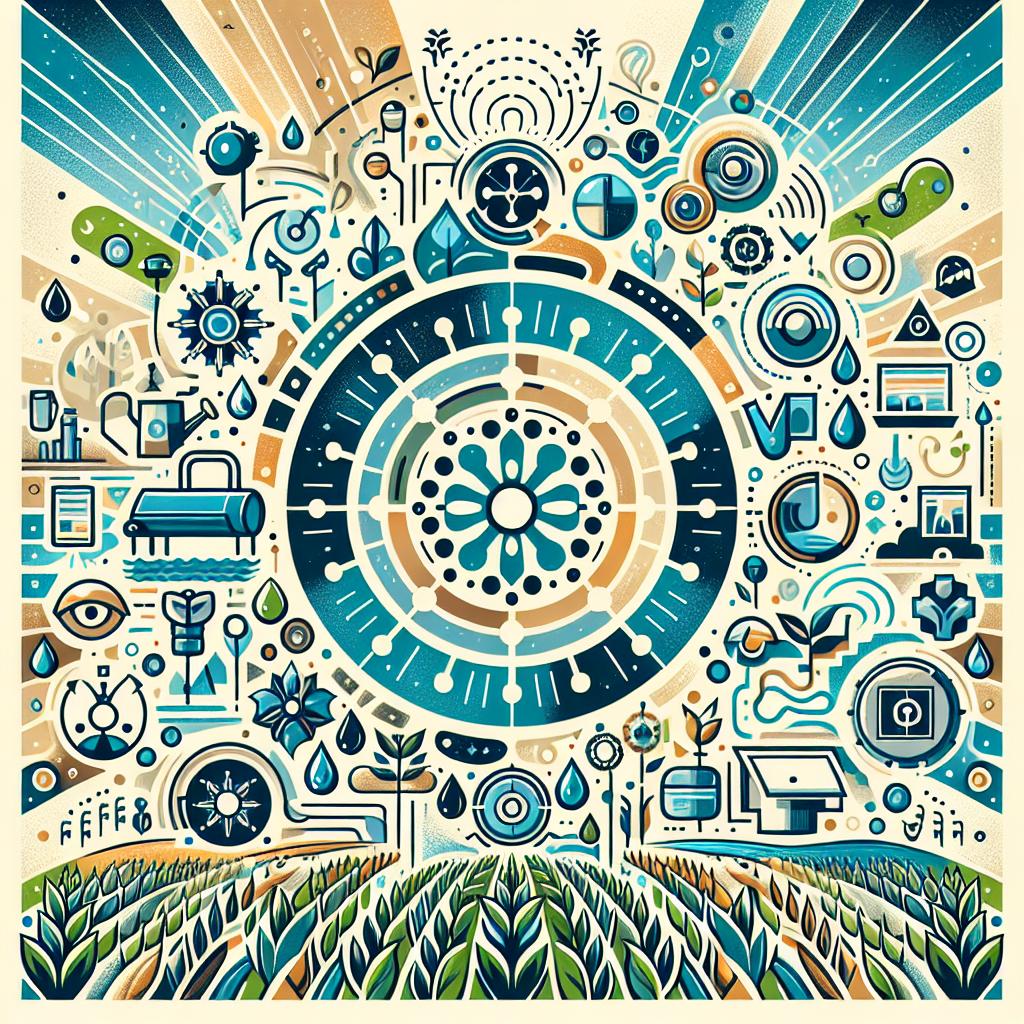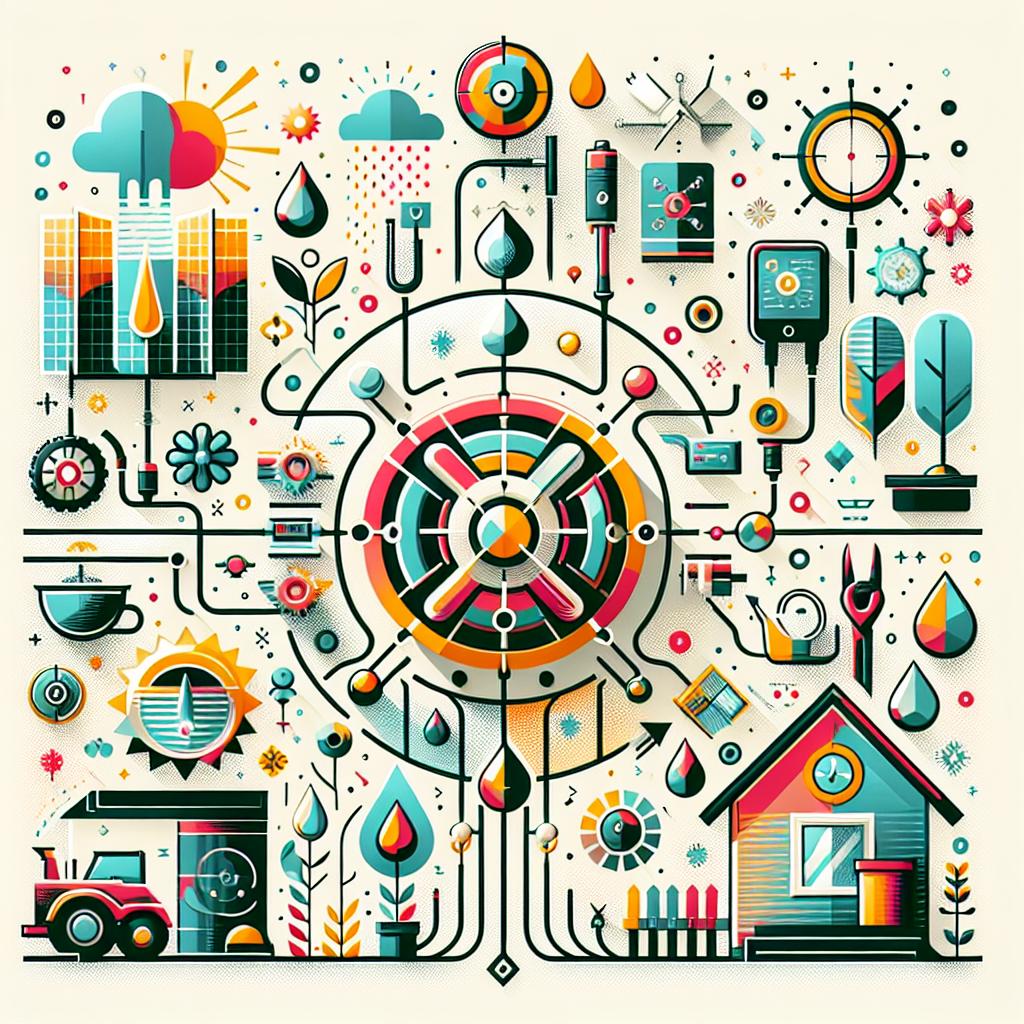This post may contain affiliate links which means I may receive a commission for purchases made through links. Learn more on my Private Policy page.
Unlocking the Secrets to Lush Fields: A Guide to the Most Popular Sprinkler Systems for Farm Use
Welcome to the vibrant world of farming, where every seed sown holds the promise of a bountiful harvest! As every seasoned farmer knows, the secret to thriving crops lies not just in rich soil and perfect weather, but in the power of effective irrigation. In this day and age, where innovation meets agriculture, sprinkler systems have emerged as the unsung heroes of the field, transforming the way we nurture our land. Whether you’re tending to sweeping acres of corn, aromatic herbs, or juicy tomatoes, the right sprinkler system can make all the difference in ensuring your plants receive just the right amount of hydration. So, roll up your sleeves, grab a glass of lemonade, and let’s explore the most popular sprinkler systems tailor-made for farmers like you—because every drop counts when it comes to growing your dreams!
Exploring the Benefits of Drip Irrigation for Sustainable Farming
Drip irrigation has revolutionized the way sustainable farming is approached, offering farmers a plethora of benefits that traditional methods simply can’t match. By delivering water directly to the root zone of plants, this efficient system minimizes evaporation and runoff, ensuring that every drop counts. The precision of drip irrigation fosters healthier crops while significantly conserving water resources, making it a pivotal choice for farms striving to thrive in an eco-conscious environment. Here are some key advantages:
- Water Efficiency: Drip systems can save up to 50% more water compared to traditional irrigation methods.
- Reduced Weed Growth: By directing water only to the plants, less moisture is available for weeds, leading to decreased competition.
- Enhanced Crop Yields: Consistent moisture levels promote stable growth, leading to better-quality and higher-yielding crops.
- Lower Energy Costs: As drip irrigation systems usually require lower pressure, energy consumption is reduced, saving farmers money.
Furthermore, integrating drip irrigation can bolster soil quality by preventing erosion and nutrient runoff. As farmers embrace sustainable practices, they find that the system can easily be employed with organic methods, supporting a holistic farming approach. The initial investment in drip irrigation pays off quickly through reduced water bills, increased productivity, and decreased labor costs. Here’s a quick snapshot of the environmental impacts:
| Impact | Benefit |
|---|---|
| Soil Health | Improved moisture retention and nutrient absorption |
| Water Conservation | Minimized water waste and runoff |
| Pest Management | Reduced pesticide use due to healthier crops |

Maximizing Efficiency with Pivot Irrigation Systems
Pivot irrigation systems are revolutionizing farming practices by delivering water efficiently and uniformly across large fields. These systems utilize a rotating arm structure that can cover vast areas while minimizing water waste, making them an ideal choice for modern agricultural demands. Here are some advantages that contribute to their popularity among farmers:
- Water Conservation: Pivot systems apply water directly to the soil, reducing evaporation and runoff.
- Uniform Coverage: The rotating design ensures an even distribution of water, promoting healthy crop growth.
- Labor Efficiency: Automated controls reduce the need for manual labor, allowing farmers to focus on other essential tasks.
- Flexibility: These systems can be tailored to suit different crops and terrain types.
With the growing importance of sustainability in agriculture, pivot irrigation systems not only boost crop yields but also align with eco-friendly practices. Many systems now come equipped with smart technology, allowing farmers to monitor moisture levels, weather conditions, and system performance in real-time. This data-driven approach further enhances efficiency and productivity on the farm. Below is a brief overview of popular pivot irrigation systems:
| System Model | Key Features |
|---|---|
| Brand A Pivot | Integrated sensors, remote control, energy-efficient motors |
| Brand B Pivot | Customizable spans, high durability, soil moisture monitoring |
| Brand C Pivot | Variable rate irrigation, easy installation, automatic shut-off |

Choosing the Right Sprinkler Type for Your Crop Needs
When selecting a sprinkler system, it’s crucial to consider the specific needs of your crops. Different types of plants may require varying watering methods, and understanding these needs will help you choose the right system. Drip irrigation is ideal for row crops and orchards, delivering water directly to the root zone, which minimizes evaporation and maximizes efficiency. On the other hand, center pivot systems work well for large fields, allowing for uniform, large-scale coverage that is perfect for cereal grains and hay. Other options, such as spray sprinklers, can be effective for smaller areas or gardens but might require more frequent adjustments to ensure even distribution.
Another essential factor to consider is the landscape layout and soil type. Flat fields may benefit from a surface irrigation system, while sloped terrains might require furrow irrigation to manage water runoff. Here’s a quick comparison to visualize your options:
| Sprinkler Type | Best For | Advantages |
|---|---|---|
| Drip Irrigation | Row crops, orchards | Water-efficient, reduces weed growth |
| Center Pivot | Larger fields | Uniform coverage, minimizes labor |
| Spray Sprinklers | Small areas, gardens | Quick installation, easily adjustable |
| Surface Irrigation | Flat fields | Cost-effective, simple operation |
| Furrow Irrigation | Sloped terrain | Reduces runoff, promotes soil moisture |
By thoroughly assessing the needs of your crops and the specific conditions of your farming area, you can make informed decisions on which sprinkler system will enhance your productivity and yield.

Expert Tips for Maintaining Your Sprinkler System Year-Round
Maintaining your sprinkler system is crucial for ensuring optimal performance throughout the year. Start by conducting a seasonal inspection at least twice a year. Check for signs of wear and tear, such as cracked pipes or broken heads, and replace them promptly to avoid leaks. Also, consider adjusting your sprinkler heads based on the growth of your landscaping; this will help you save water and improve coverage.
Another essential aspect of maintenance is to clean your filters and screens regularly to prevent clogging, which can lead to uneven watering. Additionally, ensure that your system is scheduled to operate during optimal times—early morning or late evening—to reduce evaporation. Installing timers can also help regulate your watering schedules efficiently. Remember, a little attention throughout the year can significantly enhance the lifespan and efficiency of your sprinkler system!
The Way Forward
As we’ve journeyed through the landscape of the most popular sprinkler systems for farm use, it’s clear that finding the right irrigation solution can be a game-changer for your crops—and your peace of mind! Whether you opt for the precision of a drip irrigation system or the wide coverage of traditional sprinklers, investing in a quality system can lead to bountiful harvests and healthier plants, all while helping you conserve water and nurture the environment.
Remember, every farm is unique, and the best system for you will depend on your specific needs and conditions. So, roll up those sleeves, do your research, and choose a sprinkler system that will help your farm thrive. Here’s to a fruitful season ahead, where every drop counts and every crop flourishes! Happy farming!
This post may contain affiliate links which means I may receive a commission for purchases made through links. Learn more on my Private Policy page.
